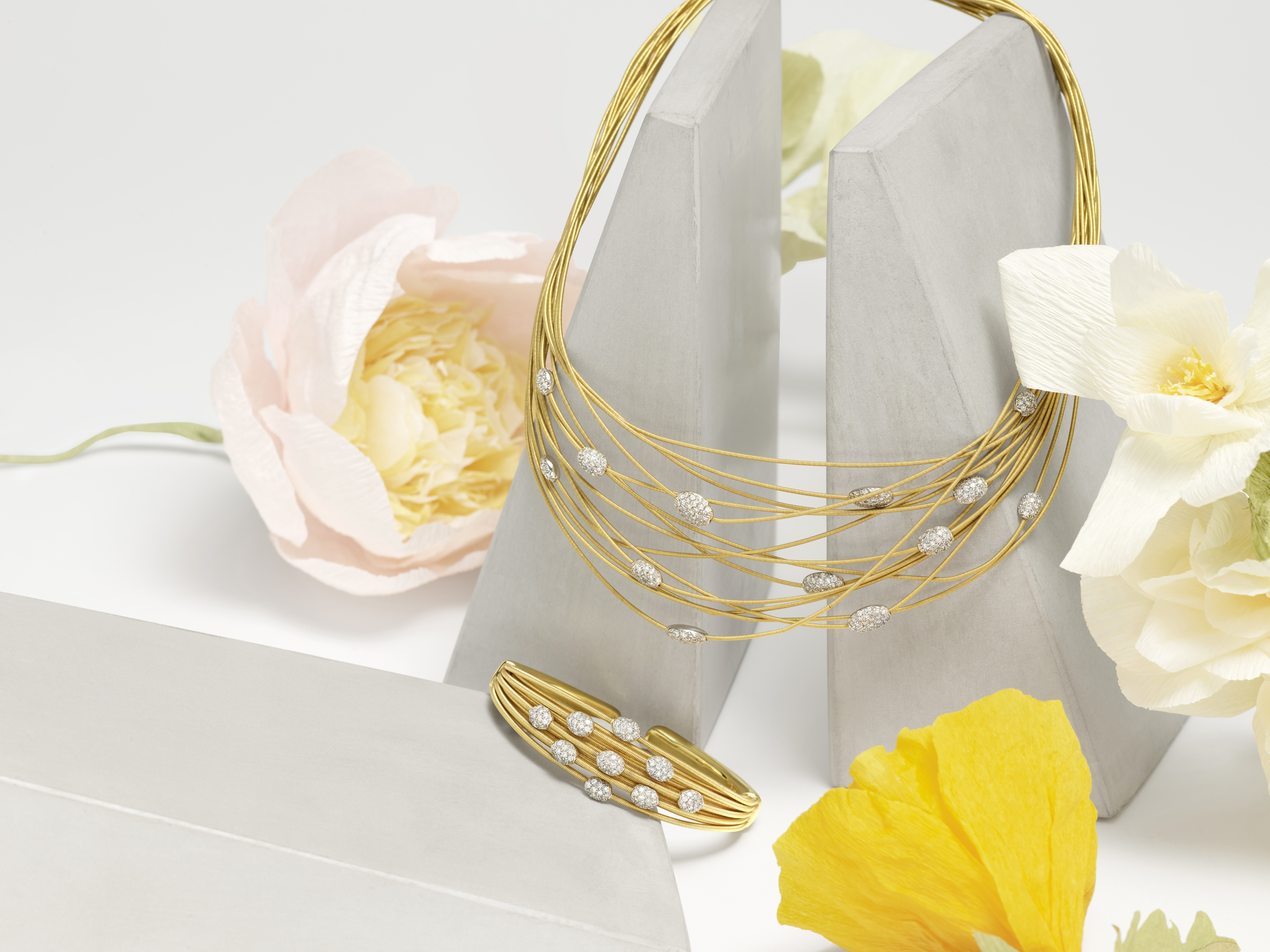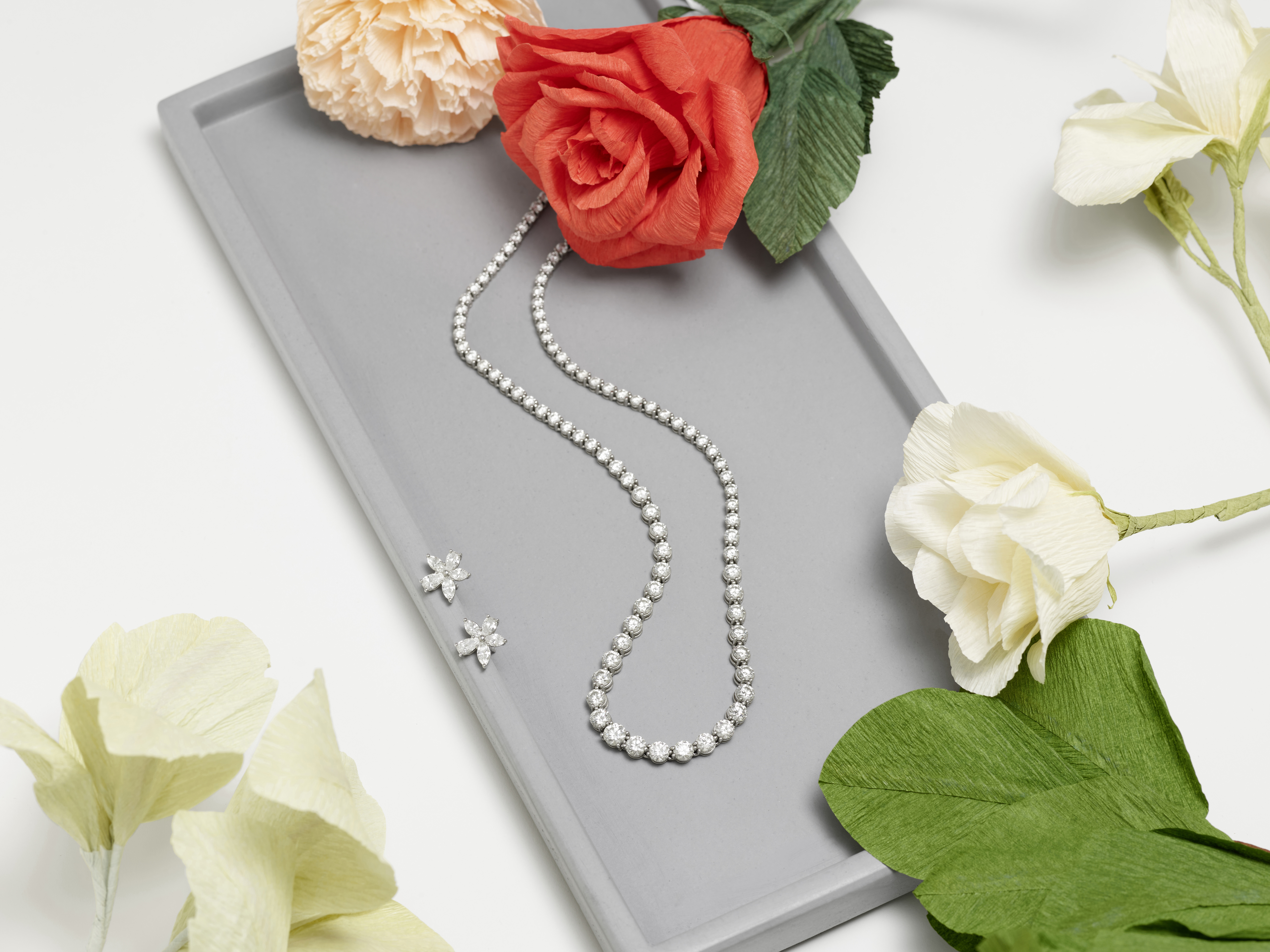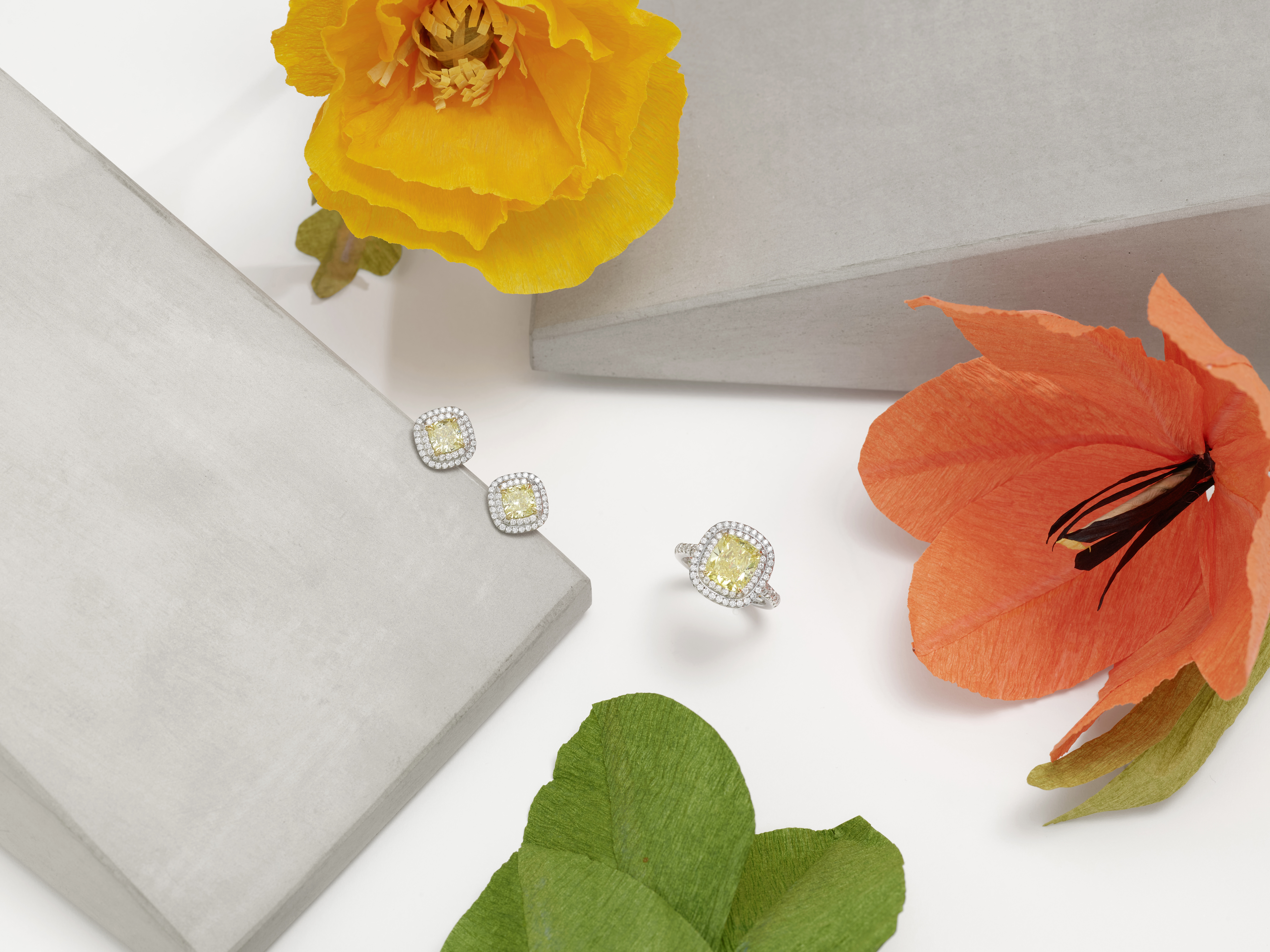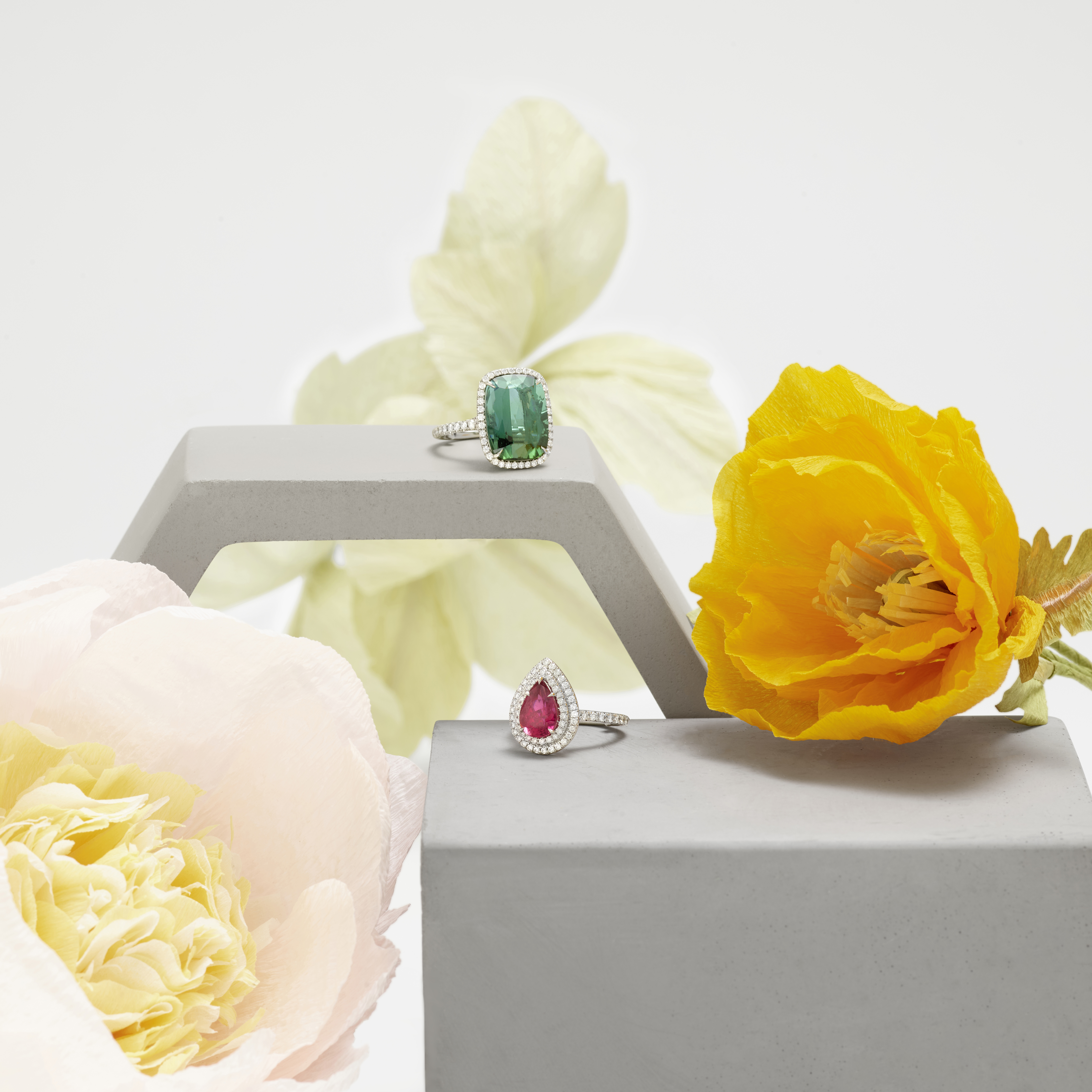Episode 160
What you’ll learn in this episode:
- What characteristics make a gemstone special
- Why collectors usually have a few pieces that don’t fit into the parameters of their collection
- Why old stones often have more charm than modern ones
- How to make trendy jewelry more timeless
- Which jewels have been the most memorable from Caroline’s auction career
About Caroline Morrissey
Caroline Morrissey is Director and Head of Jewelry at Bonhams in New York. Her areas of expertise span diamonds and colored gemstones to 20th century jewelry. She has a particular interest in large white and colored diamonds.
Since joining Bonhams in 2014, Caroline’s exceptional sales include a diamond riviere necklace, which sold for $1,205,000 in June 2015; a diamond solitaire ring which sold for $1,807,500 in September 2017; and an unmounted Kashmir sapphire which sold for $1,244,075 in July 2020.
Caroline discovered her passion for the jewelry business more than two decades ago, in a charming jewelry store in Edinburgh, Scotland, where she worked on weekends during high school. Her career started in the diamond industry in Antwerp, Belgium, and she has also held positions at the prominent luxury retailers Cartier and Leviev.
Caroline studied a double major in Economics and Politics from the University of York, England.
Photos:





Additional Resources:
Transcript:
What makes a gemstone stand out from the rest? You can talk about color, shape and cut, but sometimes a stone inexplicably draws you in. That’s the experience Caroline Morrissey has had many times as Director of the Jewelry Department for Bonhams in New York. She joined the Jewelry Journey Podcast to talk about the most memorable jewelry she’s sold; why collectors shouldn’t be too rigid about maintaining a specific theme for their collection; and what qualities make a gemstone special. Read the episode transcript here.
Sharon: Hello, everyone. Welcome to the Jewelry Journey Podcast. This is the second part of a two-part episode. If you haven’t heard part one, please go to TheJewelryJourney.com. Today, my Guest is Caroline Morrissey, Director of the Jewelry Department for Bonhams. Welcome back.
What are you normally attracted to? Why would it surprise you?
Caroline: Well, I’m very boring. I like my jewelry to be simple. I have no problem with it being bold, but I don’t want it to be complicated and bold. I find myself in a situation where I have a great appreciation for many gemstones, but that does not mean I would wear them myself—but doesn’t mean I don’t like them. There are all sorts of 1935-40’s jewels that are slightly out of character, but at the same time I’m completely embracing them. This is, by the way, mostly in most dreams. I unfortunately do not have a fabulous jewelry box at home full of these jewels. But I mostly lean towards simple designs. If it can be a hundred years old, all the better.
Sharon: Do you think they select jewelry because—what’s the word they use? It is classic, like you’re talking about, but 40, 50 years from now they’ll still love it as much. Do you think people look at that, or do they go more with trends?
Caroline: I think a lot of people go with trends and then they regret it. When I work with clients—I mean, it depends what the piece of jewelry is for. If they’re adding to a collection and they’re looking for a specific period, that’s completely different. But if you’ve got somebody who’s looking for an engagement ring or bridal or that type of jewelry, I do believe a lot of people fall into whatever is in vogue right now, and they don’t realize, “O.K., everyone’s different.” Like you say, in 40, 50 years’ time, it will just be a style from the period.
I always try and advise that there are very, very small changes you can make to many styles that will transform that piece of jewelry into a timeless and elegant piece. It can be a combination of modern yet traditional. You look at some of the pieces from a long time ago and transplant them to today, and many of them are still in fashion. They’re timeless; they will never cease to be so. I think as soon as you point that out to somebody, it becomes so obvious, but I don’t think that’s necessarily what people always want going into it. It’s hard not to want what is in style now.
Sharon: Yes. It sounds like you have a secondary career with restyling jewelry, though.
Caroline: Well, the design element of it is really fun. I don’t think I’m that great at it, but I’m definitely going to offer you my ideas, just in case.
Sharon: You’ve used the words collectors, collections. When you say a collector comes to you, is a collector like me, somebody who has a box full of jewelry? Or is it something where they have an emerald; they have a ruby; they have sapphires? What’s a collection to you?
Caroline: A collection, to me, is a group of jewelry. I feel that a collection has a different meaning to each individual. It could be a combination of pieces that you have inherited and pieces that have been given to you, perhaps pieces you’ve bought yourself. Then you could have a collector who has a collection within a specific genre. I will say that as hard as it may be, most people who collect for specific collections, whatever the time period, color, style might be, usually have a few pieces or more that fall out of the parameters for that collection, because usually they are drawn to something they can’t say no to.
So, a collection to me is literally whatever is in that jewelry box, and it doesn’t need to match. Some pieces could be broken. There could be elements of one piece and a complete matching set of another piece, but what we can do? I very much enjoy going through that collection and sorting out what needs to be done, how it should be sold, what will work for the owner, because everyone has different needs. On top of that, everyone’s jewelry, if you’re on the selling side, is different, and it usually requires a little bit of work to be done. We’ve got to do some sleuthing, finding out what particular pieces are, if they started off life together, if they were married together at a later stage in their jewelry life. That’s a really fun thing to do, and it can also help people find out more about where their jewelry has come from. It can be a really interesting road to go down.
Sharon: That sounds very interesting. Tell us about some of your most memorable sales.
Caroline: How about some memorable auction pieces within the sale?
Sharon: O.K., great.
Caroline: I’ve got some great stories for you.
Sharon: Please, O.K.
Caroline: I’m going to start off with the first one. It was a sapphire and diamond ring. This lady had bought the ring from an antique store, and she had been told the sapphire was synthetic but the mounting was a Tiffany mounting. It was a Deco, very beautiful yet simple Tiffany mounting. She bought it for $800, which was basically the cost of the mounting and the synthetic stone. She enjoyed it. Things happened with her life, and at some point, she had been told by someone that it might not be synthetic, this sapphire. That prompted her to call us. Long story short, we managed to lay eyes on the piece. We sent it to a lab, and it came back as an 8-carat Burma origin, no heat, no enhancements.
Long story short, it went into a sale. They flew here and sat in the front row of the auction. It hammered for $200,000. Afterwards she came up—she was with a friend and was in tears—and thanked us so much, because her husband had medical problems, and this was going to make everything O.K. for them so that she didn’t have to sell her house. That’s a really special moment to be a part of, and she was so thankful. We didn’t actually know the full story of how much all of this meant until the very end, but these things really do happen.
Sharon: Wow!
Caroline: I have another story for you. We had this brooch that was sent in to us. I’m going to try to be diplomatic here, but I don’t think it had been cleaned in a very, very long time. It had been bought from a garage sale for $8. Anyway, long story short, it had a diamond, an emerald and a ruby under a carat, but it was really fine quality once it was all cleaned up. We had the diamond certified, and it came back as a VS1, so the highest color, completely clean, and an old stone. The emeralds came back Colombian with minor or insignificant inclusions. Again, very, very high quality. The ruby came back Burma, no heat. This tiny, little brooch sold for $35,000.
Sharon: Wow!
Caroline: It does not happen often, but it does happen, these stories. I suppose that’s one of the amazing parts of being at auction, that you can be part of somebody’s journey, whether it’s from a garage sale and is a big surprise, or something that comes in and is an angel at a time of need.
Sharon: Wow! The stories you’re telling are the reason I like antiques, I suppose.
Caroline: Oh, absolutely. I have more. It really does happen, and it’s amazing.
Sharon: It is amazing, and it makes you want to go out to every flea market and garage sale. I just don’t have any kind of patience for that.
Do you have people who say, “Only call me if you have an unset stone that you think is worth me looking at”? Or do they say, “I don’t care what the stone is set in, give me a call”? Do you have collectors who just want the stone?
Caroline: The thing is, in most cases, people need a stone to be set in a piece of jewelry to visualize it. Even if they don’t expect to wear it or it’s not their intention to wear it, just to view it as a piece of jewelry, it needs to be in some type of setting. It doesn’t even need to be a nice setting. It just needs to be a vehicle to make that stone or stones into a piece of jewelry.
I have clients who say to me, “If you have important colored stones, please call me,” and they will not care what those colored stones are set in. In many cases, they probably won’t care how old the stone is. They are just looking for beautiful colored stones. I suppose based on what I have, they’ll work out whether it’s interesting to them, but in most cases in that scenario, the mounting is neither here nor there. They’re looking at the stone. They don’t care if it’s in a ring or a piece of jewelry.
Sharon: Do think they want to have the stone set themselves? Do you think they take it and have it put in a piece of jewelry themselves, or do they take the stone and put it in their safe and say, “That’s nice.” What do they do?
Caroline: Some people definitely do that. If they’re going to put it in a safe, they’re probably just going to leave it in the mounting it came in and put it in the safe and close the door. I suppose it depends on what the purchase is for, but auction is a secondary market, so you’re not necessarily going to walk in and find your perfect stone in the perfect mounting, especially with diamonds. Most of our clients will first and foremost, if they’re looking for stones, look for that stone. If they need to make any changes to the mounting or style, they will do that afterwards.
Those people looking for jewelry, they’re in a completely different category. The stones become insignificant to them because they’re looking for a piece of jewelry, and they will oftentimes have a time period or a designer or a style in mind. If it does have stones in it, those stones will enhance the piece of jewelry, but the purchase will be about the jewelry versus the stones, if that makes sense.
Sharon: Yes, it makes a lot of sense. What do you see as the market for stones for jewelry, or stones in general? You hear so much about changes with younger buyers. What’s the market? Is it the same as always?
Caroline: The market is strong at the moment; that’s for sure. I will tell you the number of very, very fine quality, unenhanced, colored gemstones, there are not so many around, and those that are around are incredibly expensive. You can see that, in many cases, the younger generation can very easily be priced out. They want a Burmese ruby, but to get a nice one, they have to have incredibly deep pockets.
So, what we’re seeing now is—and I’ll carry on with rubies as an example—they’re going to make concessions. They might say they want a Burmese ruby, but in order to afford one, they’re going to take a heated Burmese ruby. So, they’re getting a few of the things they want, but not everything. On the flip side of that, there’s this wonderful source of rubies in Mozambique. People are now saying, “O.K., I can still have a beautiful ruby, but instead of it being from Burma, I’m going to get an equally beautiful one from Mozambique and it’s going to cost me less.” It might not have the cachet of a Burmese ruby, but that’s the direction they want to go in. We’re seeing people look for alternatives in quite a saturated market.
We’re seeing that spinels are coming up now, and more people are really interested in spinels. They’re realizing what fabulous colors they come in and what bright stones they are. I see that really taking off in the next five to 10 years. Already in the last five years, spinels have made big tracks into the market, and I see that continuing. I think the new generation of buyers is a little more open to different sources and different gemstones than perhaps the previous generation was.
Sharon: I think open is a good word. I think it’s broadened. It’s not just emerald, sapphire, ruby, but spinels and padparadscha seem like the big ones.
Caroline: Padparadschas are sapphires. They are stones that have a very specific combination of pink and yellow for a padparadscha. A beautifully colored padparadscha that is clean and unheated with an ideal origin is very desirable, as we say, very, very desirable.
Sharon: Yes, so I hear. That’s one I happen to hear about. The spinels have broadened the market. It seems that now people are more open.
Caroline: I think they’re much more open now. They’re willing to look at different styles and different colors and different minerals and realizing it can be fun. It’s a good alternative; it’s not a bad alternative.
Sharon: Right, and it may be the only viable alternative, in a sense.
Caroline: I think many people are realizing that. Because, like I said, to get a high-quality, Burma, no-heat ruby, first you’ve got to find it and then you’ve got to acquire it. I would say that the vast majority of people—and this is a very small stone—they’re going to find that to be difficult.
Sharon: Yes, you’re the one who would know. Thank you so much for talking with us today. It’s very, very interesting. I appreciate it, and I hope you have everything you want come across your desk.
Caroline: Thank you very much. It’s been an absolute pleasure. Yes, I can’t wait to do it again.
Sharon: Thanks a lot, Caroline.
Thank you again for listening. Please leave us a rating and review so we can help others start their own jewelry journey.

